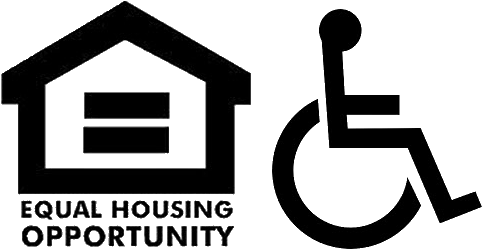
Social media isn’t just for memes and apartment aesthetics – it’s a powerful tool for building your brand, connecting with renters, and driving leases. But when you’re marketing properties online, every caption, hashtag, and lifestyle photo can fall under the same legal microscope as your print ads and ILS listings.
Fair Housing compliance isn’t optional, and it’s not just for leasing teams. If you’re managing social media accounts for multifamily communities, the organic social posts must follow the Fair Housing Act (FHA). It’s the law, and violations can lead to serious penalties.
What is Fair Housing Compliance in Marketing?
Fair Housing compliance means following the Fair Housing Act, which prohibits housing discrimination based on protected classes like race, religion, disability, familial status, and more. In social media marketing, this extends to how you describe your property, who you show in images, and what assumptions you make about your renters.
Your Facebook and Instagram Stories, Reels, and Posts are considered advertising under the law, so anything posted must avoid implying preference or exclusion. Understanding this isn’t just about playing it safe, it’s about creating a more inclusive and welcoming renter experience.
To help reinforce compliance visually, we include EHO (Equal Housing Opportunity) and ISA (Internet Listing Service Accountability Program) logos on community Facebook cover photos and as part of an Instagram Story Highlight, making them easily visible to prospective renters.
We also created our AI-powered Fiona Fair Housing Compliance tool to monitor and ensure your property meets Fair Housing laws.

4 Ways to Keep Your Social Media Posts Fair Housing Compliant
At Digible, we’re committed to creating inclusive, responsible content for our organic social clients. The tips below reflect practices we’ve implemented into our own strategy to ensure every post we create aligns with Fair Housing standards, not just to meet legal requirements, but to support a more welcoming renter experience.
1. Mind Your Messaging
Avoid language that implies a preferred renter type. Even well-meaning phrases can raise red flags.
Examples to avoid:
• “Great for families”
• “Perfect for young adults”
• “English speakers preferred”
Instead, highlight property features that appeal broadly:
• “Spacious one-bedrooms with updated kitchens”
• “Close to local shopping and dining”
2. Post Inclusive Imagery
Use visuals that represent a range of races, ages, family structures, and abilities. This not only supports compliance, but it also makes your brand feel welcoming to more renters.
3. Use Inclusive & Modern Terminology
Choose words that are accurate, respectful, and neutral. Avoid outdated terms like “master bedroom.” Instead, use “primary bedroom” or “main bedroom.”
For closet descriptions, avoid mobility-related language such as “walk-in closet.” Focus instead on size or function. Try phrases like:
• “Ample closet space in select apartments”
• “Extra storage available in the main bedroom”
Also, steer clear of phrases like “walk to the park” or “steps from your door,” which suggest physical ability. Instead, use accessible alternatives such as:
• “Conveniently located near local parks and trails”
• “Close to restaurants, grocery stores, and green spaces
4. Educate Everyone Involved
Fair Housing compliance is a shared responsibility, especially when multiple people are involved in creating content. Even if Digible is handling your organic social posts, on-site teams often contribute ideas, photos, or captions.
Make sure everyone who touches your content understands the basics of Fair Housing. A team overview or internal conversation can go a long way toward avoiding unintentional violations.
For more formal training, we recommend the Fair Housing Institute’s online certification program. It’s designed for multifamily professionals and covers practical, real-world scenarios that apply directly to marketing and leasing teams.
Key Takeaways for Fair Housing in Your Social Media
These quick reminders will help ensure your social media content stays Fair Housing-compliant, inclusive, and consistent across platforms.
- Default to features. What you offer > who it’s “ideal for.”
- Use neutral phrasing. Keep it clear, not exclusive.
- Stay consistent. Use the same compliance rules across all platforms.
- When in doubt, leave it out! Better safe than sorry.
You’ve Got the Rules, Now Build Out the Strategy
Creating compliant social content doesn’t mean sacrificing creativity! It means building an online presence that feels welcoming to every potential renter. By paying close attention to language and visuals, you’ll protect your property and build a brand that renters trust.
From there, the real fun begins: building a strategy that drives results.
If you’re ready to level up your content game, head over to our blog on actionable strategy: 👉 How to Build a Winning Social Media Strategy That Drives More Leases
At Digible, we specialize in organic social that’s not just compliant – it’s creative, consistent, and built to convert. From content calendars to custom captions, our team knows multifamily inside and out. Let us handle the strategy, so you can focus on the leases! 👉 Explore Digible’s Organic Social Media Services









